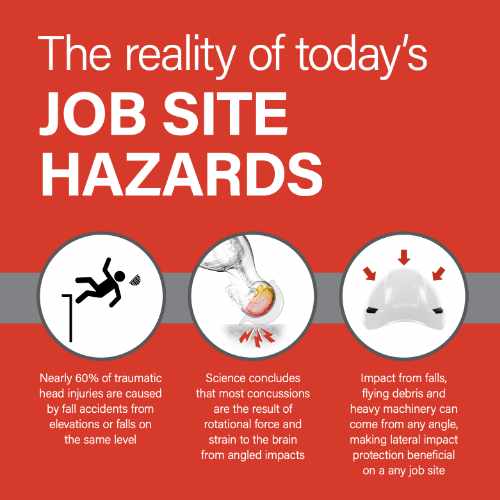HEAD PROTECTION: Types And Classes of Hard Hats
In any workplace, safety should always be a top priority. One crucial aspect of ensuring workers are provided proper head protection. Hard hats play a vital role in safeguarding workers from potential hazards, particularly those posed by falling objects. The level of protection offered by a hard hat depends on its Class and Type, making it essential to choose the appropriate one for each specific task.

Hard hats are designed to shield workers from injuries caused by falling objects, such as tools, debris, or materials. By wearing a hard hat, workers minimize the risk of head trauma and potentially life-threatening accidents. However, it is important to note that not all hard hats provide the same level of protection.
The Class and Type of a hard hat determine its level of resistance to impact and electrical shock. The Class refers to the hat's ability to protect against impact, while the Type indicates the hat's resistance to electrical conductivity. Each Class and Type is assigned a specific rating, ranging from Class G general use to Class E electrical and Type I top impact to Type II side impact.
- Class refers to the hat's ability to protect against impact
- Type indicates the hat's resistance to electrical conductivity
Selecting the appropriate Class and Type of hard hat is crucial to ensure maximum safety for workers. For example, workers in construction or industrial settings where falling objects are a common occurrence should opt for Class E and Type I hard hats. These hats provide high levels of protection against top impacts and electrical shocks.
- Falling objects common opt for Class C or G, Type 1 Hard Hat
- Flying objects for side and top protection opt for Class E, Type 2
It is equally important to regularly inspect and maintain hard hats. Any signs of cracks, dents, or deterioration should be addressed immediately, as these can compromise the hat's protective capabilities. Additionally, hard hats should be replaced every five years, even if they appear to be in good condition, as they may have undergone internal damage that is not visible to the naked eye.
In conclusion, hard hats are an indispensable safety measure in any workplace. They shield workers from potential hazards, especially those posed by falling objects. When selecting a hard hat, it is crucial to consider the Class and Type to ensure the appropriate level of protection. Regular inspections and replacements are also essential to maintain the hat's effectiveness. By prioritizing the use of hard hats and following these guidelines, employers can help create a safer work environment for their employees.

Does it matter what Hard Hat I choose?
Industrial Strength Head Protection with ultra light shell








